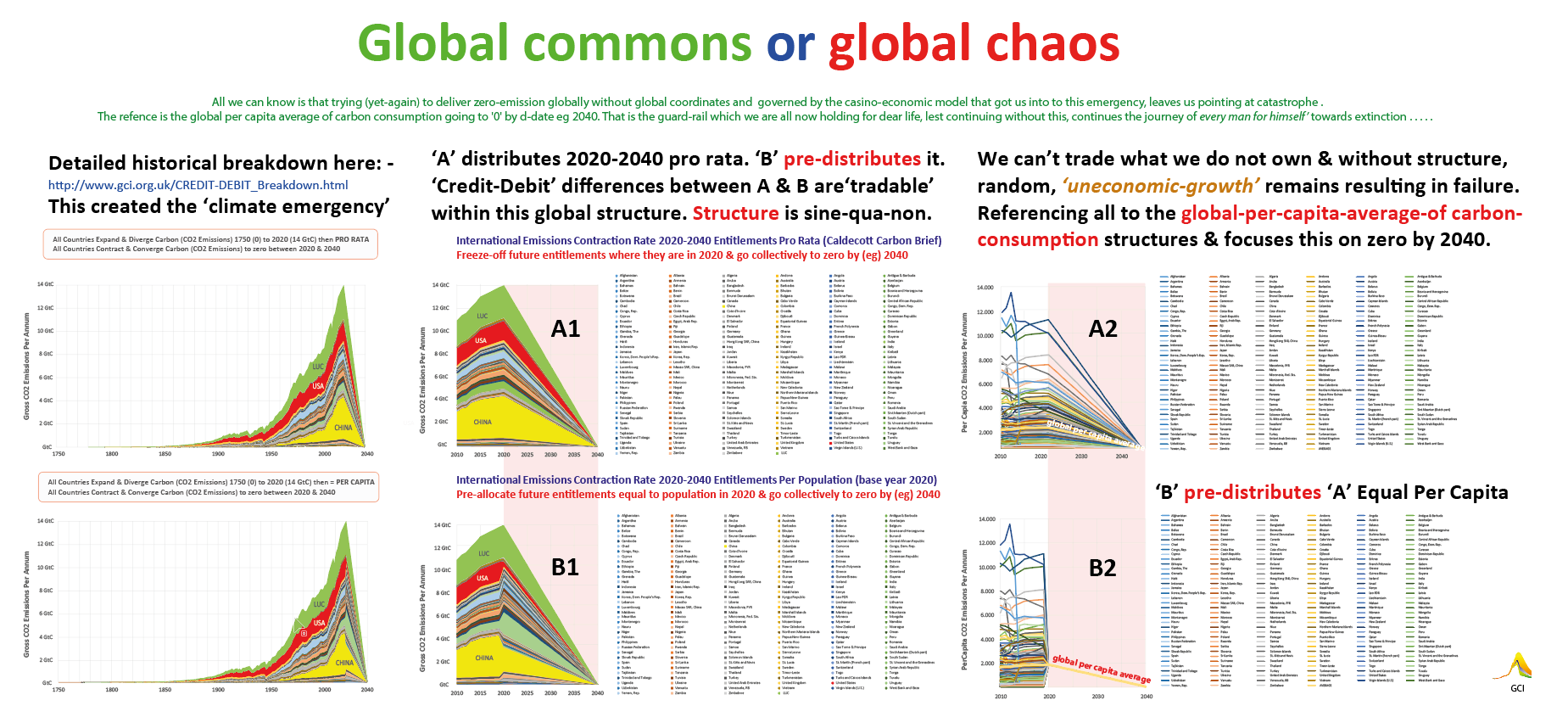Global framework for shrinking & sharing the remaining global carbon budget
The UK hosts COP-26. The Cabinet Office asked for input on achieving UNFCCC-Compliance. This was provided.
This coincided with the UK Hadley Centre admitting the extent to which their temperature data misled IPCC AR5.
i.e. the whole schedule to which the world has been encouraged to achieve zero emissions by 2050 is inadequate.
******************************
The Carbon Budget Analsysis Tool (CBAT) shows that Contraction & Convergence (C&C) is not a replacement for 'economics, politics & technology'.
CBAT embraces these in 4 'Domains' of analysis & that this integration is fundamental to UNFCCC-Compliance
- Contraction & Concentrations
- Contraction & Convergence
- Contraction & Conversion
- Damages & Growth
******************************
All-country detail of the: -
- historical Carbon Credit/Debit account is here
- future contraction & convergence of the available carbon that's left - the subject of this page - is addressed below.
******************************
A future full-term global carbon-contraction-event (the weight/rate/date of the global carbon-budget), in this example is completed by 2040.
This is minus 20 tonnes per second for 20 years globally, as summarised below. The end-date can be sooner-&-safer or later-&-more-dangerous.
It shows the . . .
- global per capita average of CO2 consumption is the reference ('1.8' to '0' tonnes per person in 20 years)
- need is there to draw this linear eg 2020-2040 in advance (see B2 - base year for population is set eg 2020)
- global gross CO2 contraction-rate for zero-carbon by 2040 tabled here is minus 20 tonnes/second for the next 20 years (see A1) & here
- global shares of the carbon-budget that remain are calculated, indexed to that linear per capita average reference curve to zero by 2040 (see B1)
- actual international contraction rates are calculated linear indexed to zero by 2040 (see A2)
- calculation of the extext to which parties are above or below that global per capita average is easy (see A1) and
- quantification extent is revealed to which parties have either
[a] carbon-debit (above average) or
[b] carbon-credit (below average)
- pre-distribution of this full-term carbon-contraction-event reveals that the: -
[a] total extent of the carbon-debit equals
[b] total amount of the carbon-credit
In other words this is like music - the 'Well Tempered Climate Accord' - which means playing together in-time & in-tune
- this is not making more and more confusion (noise) by just picking (and then 'trading') sub-global numbers out of more sub-global hats
- this is taking the weight-rate-date of whole-carbon-contraction-event 2020-2040 so that all its parts 'commute' or 'add-up' to that whole.
If we are really serious about reconciling everyone globally across just one generation to be net-zero carbon globally by 2040,
C&C justice without vengeance requires this whole-carbon-truth needs to be set out and agreed in advance and also adhered to.
Without this minima, all we have is aspiration, speculation, derivatives & overshoot aka the random, unchecked, unequal & chaotic
'uneconomic-growth' of wasted investments, still curving into ever greater climate-changes-and-damages & still curving towards extinction.
Touch chart below to enlarge it (a zoomable pdf file of this is here)
An animation of these rates is hereAn example of how trading debit and credit emissions could largely resolve the emissions-trading imbalance between (for the purposes of argument) the UK & Afghanistan.
At a 'carbon-price' of (say) between $10 and $100 per tonne carbon, Afghanistan's credit is worth between $6 & 60 billion dlollars (2020/40).

